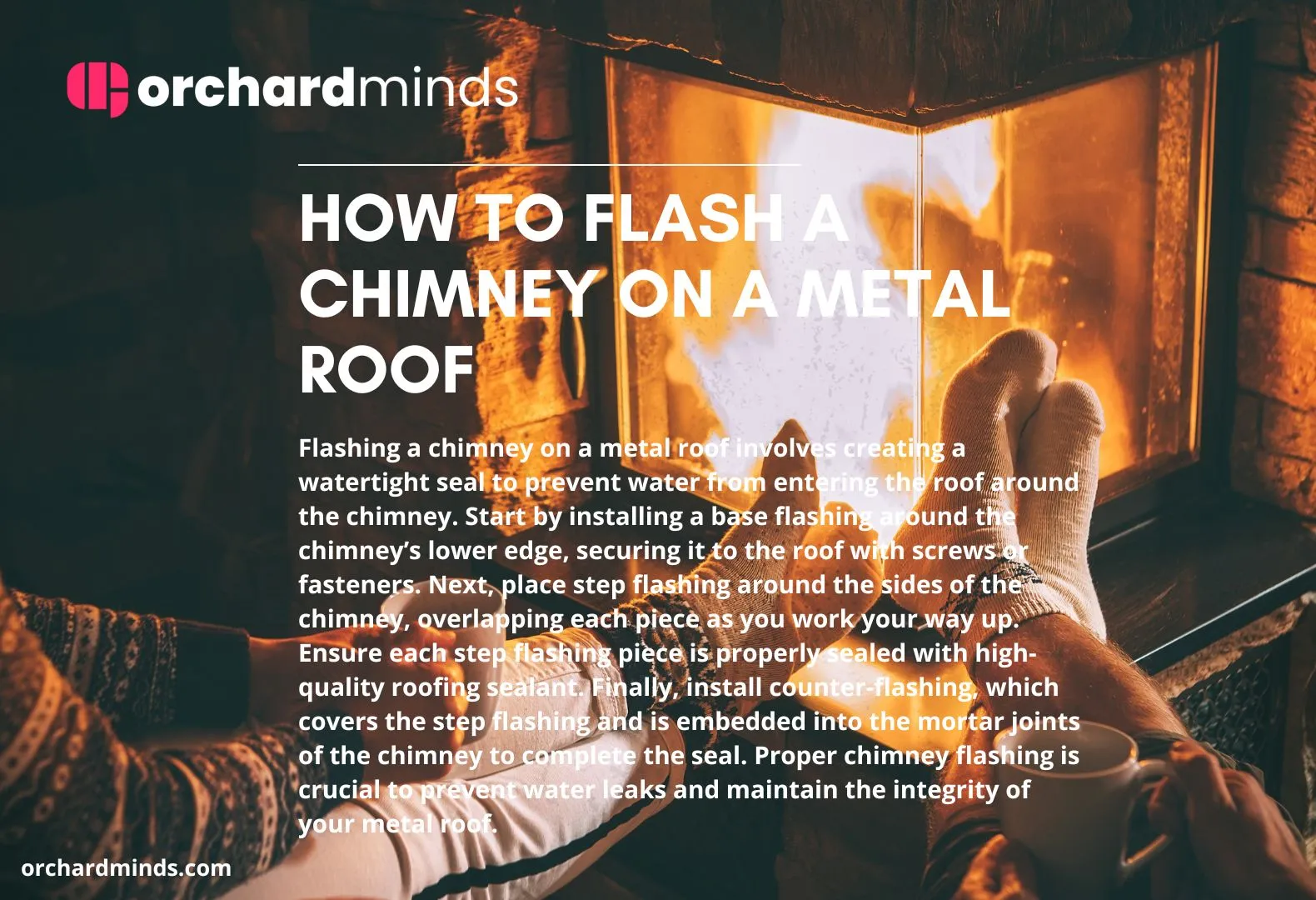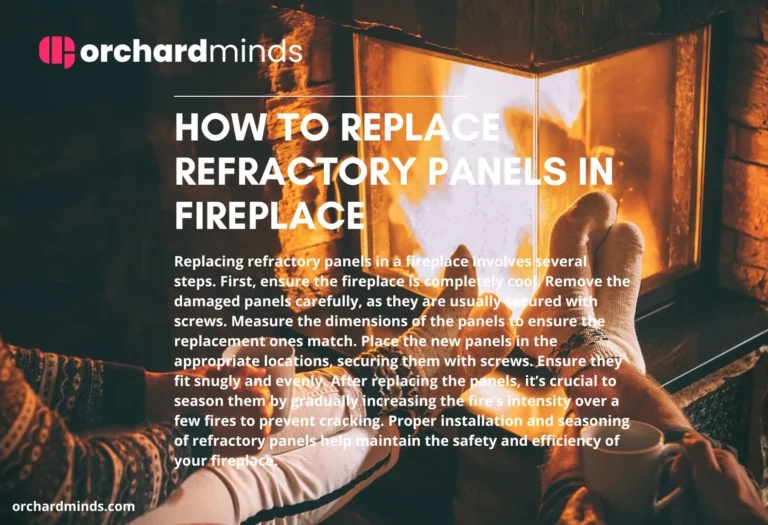A flashing a chimney on your metal roofing is sealing the opening to prevent water from gaining access to your roof via the chimneys. The first step is to fit a base flashing around the bottom edge of a chimney right at the spot near to where it touches and attach it to your roof with screws or fasteners. Next, you will need step flashing around the sides of your chimney; make sure you overlap the pieces as you go upward around the flange side.
Ensure that the most suitable roofing sealant is counter-flashed in with all pieces of step flashing. Lastly, apply the counter-flashing that will be fixed to the chimney into the mortar joints of the chimney. Proper chimney flashing will prevent water leaks and damage on the metallic roof. If you are not sure on how to do this, consider getting some help from a professional roofer.
Add Chimney Flashing
One of the tricks to a watertight, secure roof system is the installation of chimney flashing. Chimney flashing is the technique used to establish a watertight barrier around your chimney, barring water from creeping into your roof. Though, generally, the installation is done using base flashing, step flashing, and counter-flashing. Base flashing is attached to the deck of the roof and is wrapped at the lower part of the chimney.
Step flashing, generally, is a part of the chimney assembly work that is installed in a ‘stair-step’ fashion up the chimneys’ sides. It interlaces with the roofing material. Counter-flashing is bedded into the mortar joints at the chimney, covering the step flashing. The correctly applied chimney flashing ensures leakage protection to the roof and safety against water bodies.
If you are not experienced in this process, it is better to seek the advice of a professional roofer to have it installed correctly and efficiently.
Tools Required
Hardware required for installation of the chimney flashing includes a hammer, a pry or crow bar, a utility knife, tin snips, a caulk gun, a tape measure, chalk line, level, roofing nailer, extension ladder, and safety harness or rope when working at heights. You also may need a metal-cutting blade for your circular saw or an angle or die grinder to cut the flashing material to size.
Required Materials
The materials needed are the flashing material of your choice, which is most commonly how one would flash the chimney with aluminum flashing, copper flashing, or galvanized steel flashing if he/she is on a real strict budget. You would also need roofing cement or some good roofing sealant coatings, the roofing nails to fasten the flashing down, and the self-tapping screws, which will attach the flashing down nice and tight. Of course, you may also require proper-sized step flashing, along with similarly matching counterflashing, for your chimney type and the roof you have. Such flashing should be properly done together with underlayment and roofing material, like shingles or metal panels. Use only the best materials for proper installation that will assure the homeowner of watertight and long-lasting chimney flashing.
This traditional, time-tested flashing method will make any chimney proof against leakage.
In the avowed aim of a watertight chimney and safeguarding the residence from ensuing water damage, there is a need to invoke the use of the best and proven traditional methods of designing chimneys with flashings. Proper flashing around the chimney is the secret of any functional roof system. It’s quite a complex process during application to ensure installation of the various components to create a seamless and watertight seal around the chimney.
The traditional approach typically focuses on three key things:
Base Flashing: The base flashing is the very first barrier to entry by water. This is the flashing that is installed at the lowest part of the chimney and is customarily made from such corrosion-resistant materials as aluminum, copper, or galvanized steel. This member is wrapped around the lower edges of the chimney and extends over the roof in such a way that water is repelled from entering at the chimney’s point of entrance.
Step Flashing: These are individual pieces of L-shaped metal, usually formed from the same metal as the base flashing. Step flashing is installed in a stair-step configuration up the sides of a chimney. The pieces interlace a roofing material, be it shingles above or metal panels below. The result is, for all intents and purposes, a perfect seal that doesn’t allow water in around the chimney and up under the substrate.
It is the counter-flashing, placed over the step flashing, that is wedged into the mortar joints of the chimney and made watertight. It acts as extra protection in preventing water infiltration in the seam area formed by the abutment.
This traditional way of performing flashing has withstood the test of time for its effectiveness against leakage and water damage.
This will go along with watertight protection by the use of good-quality flashing materials and the services of experts in the field of roofing. This wouldn’t preclude regular checks and maintenance to keep on top of the wear and tear that may be occurring to that area, protecting you from the elements. The following proven measures help you ensure the life and structural integrity of a roof, together with protection for your home again against water-related damages.
Installation of Metal Roof Flashing for Chimney: Step-by-Step Guide
Step 1: Cut to Length and Measure Flashing
To cut the flashing material in the right manner, start with measuring your chimney’s dimensions properly. Most flashing materials consist of aluminum, copper, or galvanized steel. You will require the use of tin snips or any cutting tool to maneuver the flashing pieces and cut them into the used sizes depending on the base, step, and counter flashing.
Step 2: Install Underlayment Base Flash.
Put the base flashing over the top of the chimney’s base but not onto the roof deck. To belly this in, overlap it in accordance with the lowest edge of the chimney; pull it out above the lowest roofing part and fasten it—having it overlap the lowest pan. You can belly the base flashing in and overlap it; fasten this to the deck out on the roof, so you can pull it out from the lowest roof part. Place the base flashing directly over the chimney’s base so it.
Step 3: Install Step Flashing
Stagger the step flashing around chimney sides in a stair-step fashion. These L-shaped pieces of metal fit between each course of roofing material and are woven in with your roofing material. They direct water away from the base of a chimney. Step flashing is usually the same product as the base flashing.
Step 4: Install counter-flashing
The counter flashing, in turn, is placed over the top and makes it possible to hide the step flashing. This installs through the mortar joints of the chimney with the application technique imbedded. In literal terms, the counter-flashing acts as a shield to the step flashings and thus well closes the chimney top from penetration of water. Installed correctly, counter-flashing piously guards against a failure towards sound connections.
Step 5: Seal Joints
Then, once all the flashing components are in place, cover the joints and edges of the flashing with roofing cement or high-quality roofing sealant. This final step provides a watertight barrier and thus eliminates any chance of water infiltration into the chimney structure and the roof.




1 Comment